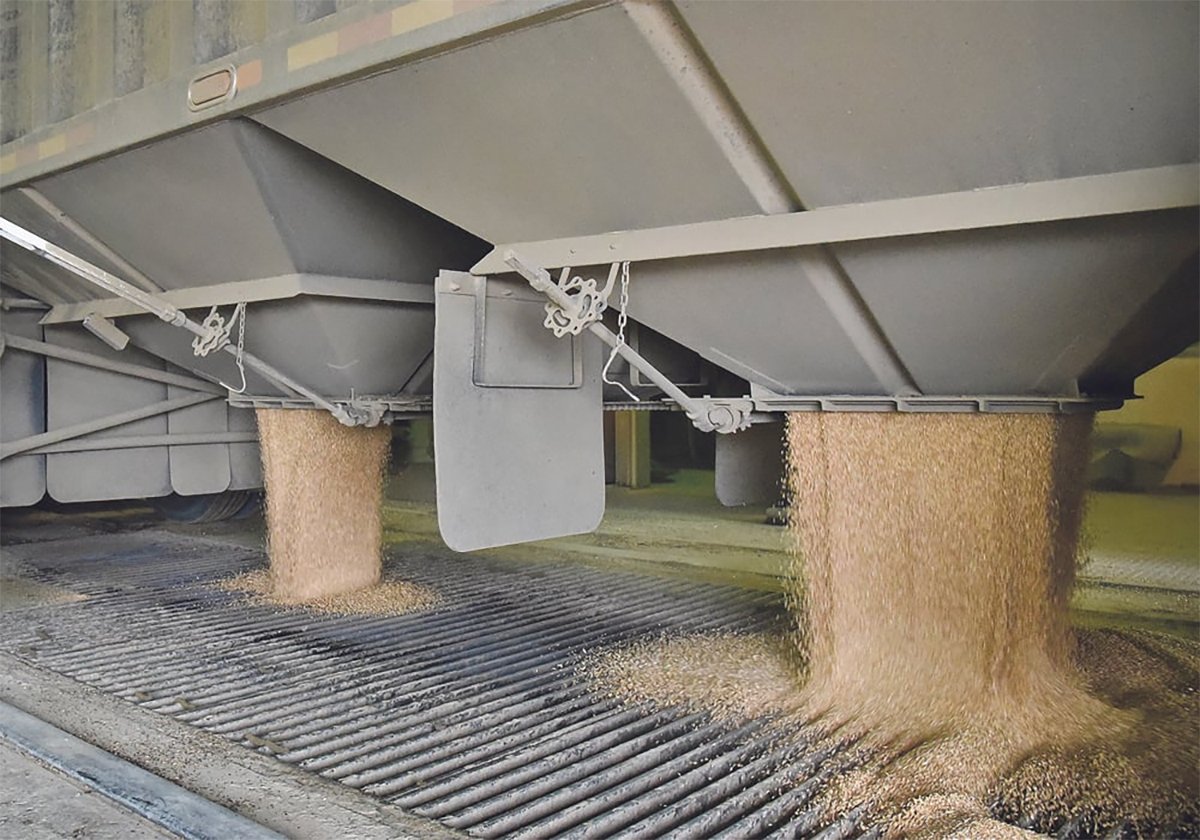“Mind the Gap”
That was a common robotic message I heard many, many times in the 1970s and 1980s, when I was young and apparently wealthy enough to often visit London, England, something I am no longer able to do. It’s the message repeatedly played in Underground stations to warn passengers to make sure to not accidentally step into the gap between the platform and the train. Such a fall would be not just funny to mean-spirited witnesses, but would make the victim messy – from more than a century of caked-on coal dust and human spit – and possibly dead. An electric rail runs in the middle of the line to give power to the modern trains.
Read Also

Worrisome drop in grain prices
Prices had been softening for most of the previous month, but heading into the Labour Day long weekend, the price drops were startling.
So “Mind the Gap” is a warning of a danger that could cause terrible woes. That’s why you should be minding the gap in the corn and soybean markets that opened up about 10 days ago. Corn and soybean prices shot higher after a bullish USDA report, creating what’s sensibly called a “gap” in price charts. It’s simply a bit of white space between recent prices and newer prices. It’s not a common thing to happen, because with open-high-low-close charts, there’s a lot of range on most days, so even strongly trending markets tend to form a line. But a gap is a gaping hole between old prices and new, and it’s pretty obvious to the eye. Let’s look at the corn and soybean charts, shall we?


See that gap there? It’s smaller in soybeans than corn, but still visible. The gap is reason to hope – with good grounds – that a higher trading range has been broken into. If a gap can be maintained, it’s powerful validation of the idea that there’s a new range being born.
But since that gap occurred, prices have gently slid back. And today, corn began biting into the gap alarmingly. If the gap disappears, it might be a big deal. It could be a sign that demand for corn and soybeans isn’t as strong as we’ve been hoping, and that something in the underlying real world is sucking away at price potential. So that would be a big deal, or at least that’s what I thought about an hour ago. But because I don’t trust my own independent technical analysis skills enough, I did what I always do in these situations: call a full-time analyst and ask him what he thinks.
“It’s a very big deal,” Rich Nelson of Allendale, Inc., told me about the gap and its narrowing.
“That is a very big deal for chart-based traders.”
The latter is a crucial point here, because when technical traders spot patterns in the market they can often move in mass, creating a self-fulfilling prophecy. We have all seen this in the commodity markets when some mathematical tripwire gets sprung within a hedge fund or three, and the markets react violently – often in defiance of underlying supply and demand fundamentals. And in Japan it has been observed that candlestick chart patterns can trigger large swings in trade, but don’t tend to have the same effect in North America. The difference? Japanese traders use candlestick analysis. North Americans don’t. The formation can create the trade, but often only if it is observed. (Hmmmm. Sounds like quantum mechanics to me.)
So the closing of the gap here wouldn’t just be a troubling indicator of possibly weakening underlying fundamental factors, but could also be the actual trigger that could lead to some traders going short the market and encourage the massive long positions in corn and other ags to unwind or reverse. If the gap is maintained, that could be the verification chart traders need to keep buying corn and ags, and could be part of a big move higher.
So watch these charts. And mind the gap. And avoid that electric rail.















